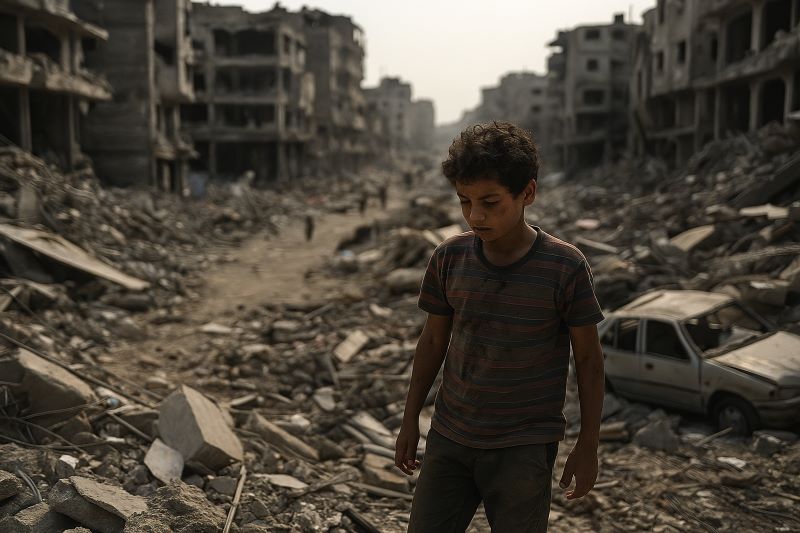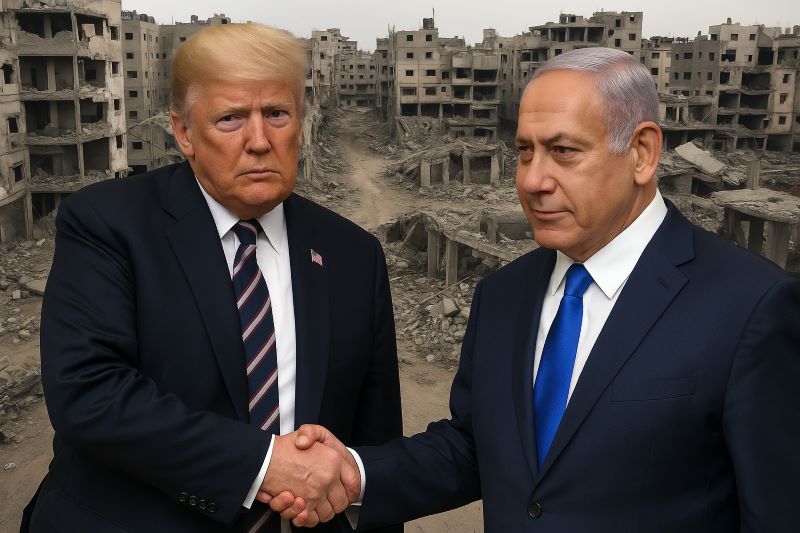US President Trump announced on September 29, after holding talks with Israeli Prime Minister Netanyahu at the White House, that Netanyahu has agreed to the “20-point plan” proposed by the US side to end the Gaza conflict. The latest news indicates that this plan was proposed by the United States, aiming to find a sustainable solution to the situation in Gaza through multiple measures in terms of security, humanitarian, and political arrangements.
According to Trump’s introduction at the press conference after the meeting, this “20-point plan” covers key contents such as ceasefire arrangements, the opening of humanitarian corridors, the exchange of prisoners of war and detainees, the raising of reconstruction funds, and future security mechanisms. Trump emphasized that the goal of the plan is “to end the Gaza conflict in a verifiable and enforceable manner, while ensuring Israel’s security interests and the basic survival rights of Palestinian civilians.” In his speech, he once said that this was “one of the most comprehensive blueprints for Middle East peace in American history” and claimed that the United States would continue to play the role of the main mediator.
Netanyahu confirmed at a press conference attended together with Trump that the Israeli security Cabinet had decided to accept the plan after internal discussions. He emphasized that the reason why Israel was willing to agree was that the plan clearly stipulated safeguard measures for Israel’s border security, including the intervention of international supervision mechanisms and strict restrictions on the smuggling of weapons by armed organizations. Netanyahu also pointed out, “Israel will not sacrifice national security in any agreement, but we are willing to explore a political framework that can bring a better future to Israelis and Palestinians.”
In response to this, a source from the Palestinian Islamic Resistance Movement (Hamas) confirmed to the outside world on the evening of the 29th that the mediators had submitted the detailed text of the “20:00 Plan” to Gaza. The Political Bureau of Hamas is conducting internal discussions and plans to make a formal response after a “thorough study”. The source also disclosed that Hamas is particularly concerned about the provisions related to humanitarian aid, the resettlement of trapped civilians, and the future governance rights of Gaza, all of which will determine the organization’s ultimate position.
Many countries in the Middle East and international organizations also responded to this development at first moment. The Egyptian Ministry of Foreign Affairs issued a statement saying that it welcomes any efforts that can alleviate the humanitarian crisis in Gaza and expressed its willingness to continue to play a role in coordinating humanitarian corridors and cross-border aid. Qatar has called on all parties to exercise restraint, saying that if the “20-point Plan” is implemented, it will provide an opportunity for long-term stability in the region. UN Secretary-General Antonio Guterres, through his spokesperson, stated that the UN supports all efforts based on international law and UN resolutions, and called on all parties to “place the protection of civilians at the core”.
However, this “20-point plan” has also sparked different voices within Israel and in the United States. Some right-wing Israeli politicians criticized the plan as “possibly restoring Hamas’ political legitimacy”, while some US congressmen questioned whether Trump was pushing the plan too hastily, fearing that new conflicts might arise during its implementation. CNN pointed out in its commentary that this plan is undoubtedly a landmark move set by the Trump administration for the 2025 foreign policy agenda, but for it to truly translate into a substantive peace process, multiple compromises and long-term efforts are still needed.
For a long time, the conflict in the Gaza Strip has not only brought heavy humanitarian disasters to the residents, but also repeatedly plunged the situation in the Middle East into tension and confrontation. UN data shows that since the escalation of the conflict, more than two-thirds of the population in Gaza has faced food insecurity, and the medical and infrastructure sectors are on the verge of collapse. The international community has repeatedly called for the establishment of a sustainable ceasefire and reconstruction mechanism, but due to political differences and security concerns, it has always been difficult to implement. If this “20-point Plan” can become a breakthrough, it will bring hope for actual improvement to millions of people in Gaza.

In his speech at the White House, Trump also did not forget to emphasize the indispensable role of the United States in this process. He said, “The United States is not merely a mediator, but also a guarantor.” We will use our strength to ensure that the commitment is fulfilled.” This statement was widely interpreted as Trump’s attempt to consolidate his international leadership through Middle East affairs while also gaining points in domestic politics.
As of now, the international community is closely watching Hamas’ final response. Once Hamas agrees to this plan, the Gaza conflict is expected to see a major turning point. If refused, regional tensions may escalate again. In any case, this “20-point Plan” led by the United States and agreed upon by Israel has become the focus of international public opinion and is widely regarded as one of the most potentially influential diplomatic events in 2025.













Leave a comment